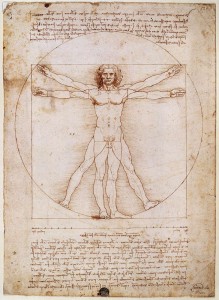Tweet: Art education: The unmet need of product managers http://wp.me/pXBON-2Ng @PGopalan #prodmgmt
Today, I am going to discuss about the unmet need of product managers – art education. Before a flame of comments to this post start to appear, let me be clear – I’m advocating for art education as a necessary complement to expand the scope of product management education, not a replacement for process education.
I came across an insightful blog post in Forbes by Steve Denning (whose book The Leader’s Guide to Radical Management occupies a prominent place in my bookshelf) suggesting how Taylor-ish ideas of measurement proposed by Bill Gates simply don’t work for education in the 21st century. In my opinion, they don’t work in many many places, but we’ll keep that for another day and focus on product management education for now.
How we make and sell products today has changed a lot from 10 or even 5 years ago. Products and services are increasingly becoming works of art. Some produced to mass scale and some custom made. Is product management education keeping up with that change? Traditional product management education provides a structured curriculum for filling documents, forms, templates, and codifying the process of product management but misses something very important – the ‘soft’, creative, right brain faculties that need to be tapped in the making of a whole product manager. To understand this we need to look at the difference between art education and trade school education. Traditional product management’s focus is on the trade part more than the art side.
 Art is part self learned, part experiential, and fully exploratory – there is no standard metric to measure e.g. I can’t say how artfully designed a smart phone is by giving 100 points to the iPhone 4, and 92 points to an Android based phone. Consumer Reports or a gadget reviewer might give us that one number we want to base our buying decision upon, but the truth is, those numbers don’t mean much. They satisfy our Taylorism trained appetite to measure and feel good about our decisions. We cannot quantitatively define art (except at auctions). Did you check out that visually appealing, easy to use SaaS application created by a small team of entrepreneurs? Well, that’s a product of art – an expression of freedom, doing product management without a manual, without controls, forms and templates. A product that came from a strong sense of empathy for the user, a collaborative experience among the team that designed it and the users who beta tested it, who gave feed back; and engineers and designers who worked together, who experimented without large organizational silos, to rapidly, incrementally and continuously improve ideas and let the best ideas win. Yes, there are controls, metrics and processes there too (e.g. Agile methods), but those are for continuous improvement versus continuous enforcement – a blind policy based approach to control that results in bureaucracy.
Art is part self learned, part experiential, and fully exploratory – there is no standard metric to measure e.g. I can’t say how artfully designed a smart phone is by giving 100 points to the iPhone 4, and 92 points to an Android based phone. Consumer Reports or a gadget reviewer might give us that one number we want to base our buying decision upon, but the truth is, those numbers don’t mean much. They satisfy our Taylorism trained appetite to measure and feel good about our decisions. We cannot quantitatively define art (except at auctions). Did you check out that visually appealing, easy to use SaaS application created by a small team of entrepreneurs? Well, that’s a product of art – an expression of freedom, doing product management without a manual, without controls, forms and templates. A product that came from a strong sense of empathy for the user, a collaborative experience among the team that designed it and the users who beta tested it, who gave feed back; and engineers and designers who worked together, who experimented without large organizational silos, to rapidly, incrementally and continuously improve ideas and let the best ideas win. Yes, there are controls, metrics and processes there too (e.g. Agile methods), but those are for continuous improvement versus continuous enforcement – a blind policy based approach to control that results in bureaucracy.
Contrast the above with products and services created by trade school education. Trade is repeating the same effort of what has already been codified with very little or no deviation from the standard. It is, in a product manager’s language, filling those standard templates, forms and documents you have – over and over – the Requirements document, the PRD, the MRD, the business case template, and expecting a different outcome. The bloated, expensive, completely clue less enterprise software coming out of a large software organization is an example of that trade school form filling, template-ized education model. Many of the product managers in these organizations have gone through product management education. Some even proudly display their certificates in their cubicles. So what’s missing? Art education.
If secondary school and college education aren’t fulfilling that role, the onus is on providers of product management education to fulfill that unmet need – rekindling the ability to create art in an otherwise boring corporate cubicle. Teaching sketching, white boarding, collaboration, experimentation, influence, story telling, presentations and such would be a start. Who’s up for that?
Tweet: Art education: The unmet need of product managers http://wp.me/pXBON-2Ng @PGopalan #prodmgmt